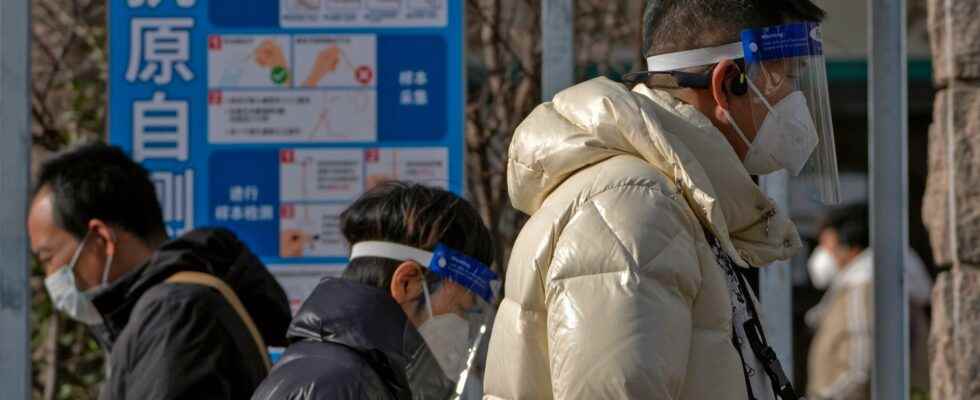Published: Less than 20 min ago
1 of 3 Photo: Andy Wong/AP/TT
Zero tolerance in China has been abolished and covid-19 is spreading with great speed in the billion population.
More will be hospitalized and more will die. But how many?
– That is the million dollar question, says Ali Mirazimi at the Karolinska Institutet.
Lots of people are being infected by the coronavirus in China right now. Since the rigorous and mandatory testing has ended, it is unclear how many are involved.
During the year, researchers have raised the alarm that a wave of infection in a largely uninfected China could quickly develop into a tsunami.
According to various calculation models that have been produced, based on a limited number of known factors, between one and two million people could die from the virus disease in China in the coming time.
– You have to take the models with a pinch of salt, says Ali Mirazimi, who is adjunct professor of clinical virology at the Karolinska Institutet, to TT.
“Will suffer”
Having said that, he emphasizes that so far very few Chinese have had covid-19 and that relatively few in the older age groups have been vaccinated.
– So yes, they will be affected. They will very likely have a large social spread of omicrons and different variants of omicrons. The hospitals will be burdened because we have seen that there are more people who need hospital care in the event of a large spread. The number of dead will certainly go up among the elderly, especially if they are not vaccinated, he says.
– But a simple number is very difficult to state.
For almost three years, China’s party government has tried, and largely succeeded, to curb the spread of the coronavirus with draconian measures. When individuals have been infected, it has led to hundreds of thousands or even millions of people being forced to isolate themselves in their homes.
The rare protests that shook the country this week have been followed by a major deregulation. The zero-tolerance was abolished basically in the blink of an eye.
Doubts about care
The vaccination effort was initially aimed at younger target groups, as the vaccine was then said to pose a risk to the elderly and people in risk groups. Therefore, many more vulnerable people in China are lagging behind in vaccination.
The Chinese vaccines are apparently also less effective than others.
– If we look at the beginning of the pandemic, when those vaccines were used in some countries, there was some data. There was an effect, but it was not as good as the mRNA vaccines that then came on the market and began to be used to a greater extent, says Ali Mirazimi.
Early during the pandemic, initiatives were taken to quickly build healthcare facilities in several places in China. Over time, less emphasis has been placed on strengthening care and more on paying for the huge shutdowns of the country’s big cities. Therefore, the country is deemed not to have expanded intensive care capacity nearly enough.
Many still afraid
In the first few days, the situation in China’s major cities has been described as confused. Even if people are once again allowed to stay in public places without further ado, many streets have echoed empty. The pharmacy’s stock of tests and drugs that could alleviate fever and infection symptoms has been bought up.
For three years, the party government has hammered home the message that the disease is dangerous and must be avoided at all costs, and that zero tolerance is China’s “magic weapon”. Now the propaganda media state that the country has won a great battle, that the virus is no longer so dangerous and that deregulation is in every way well thought out.
– The question is which restrictions will come once they start to see a large social spread. Will they shut down in a different way than by shutting down entire cities? Perhaps there will be another type of restrictions and recommendations. What measures they take during the community spread itself can affect the outcome, says Ali Mirazimi.
Facts
China
With just over 1.4 billion inhabitants, China is the world’s most populous country. The capital is Beijing.
The Communist Party took power in China in 1949 and controls society. Censorship occurs and it is not unusual for dissenters to be arrested. Xi Jinping, who has been president since 2013, has in recent years greatly strengthened his grip on power. He is considered the most powerful leader since Mao Zedong, who proclaimed the People’s Republic in 1949.
In recent years, China has regained its position as a major power. In parallel, the military has been strengthened.
It was in China, in the city of Wuhan, that the virus that causes covid-19 was first discovered at the end of 2019.
Source: Landguiden/UI
Read more
